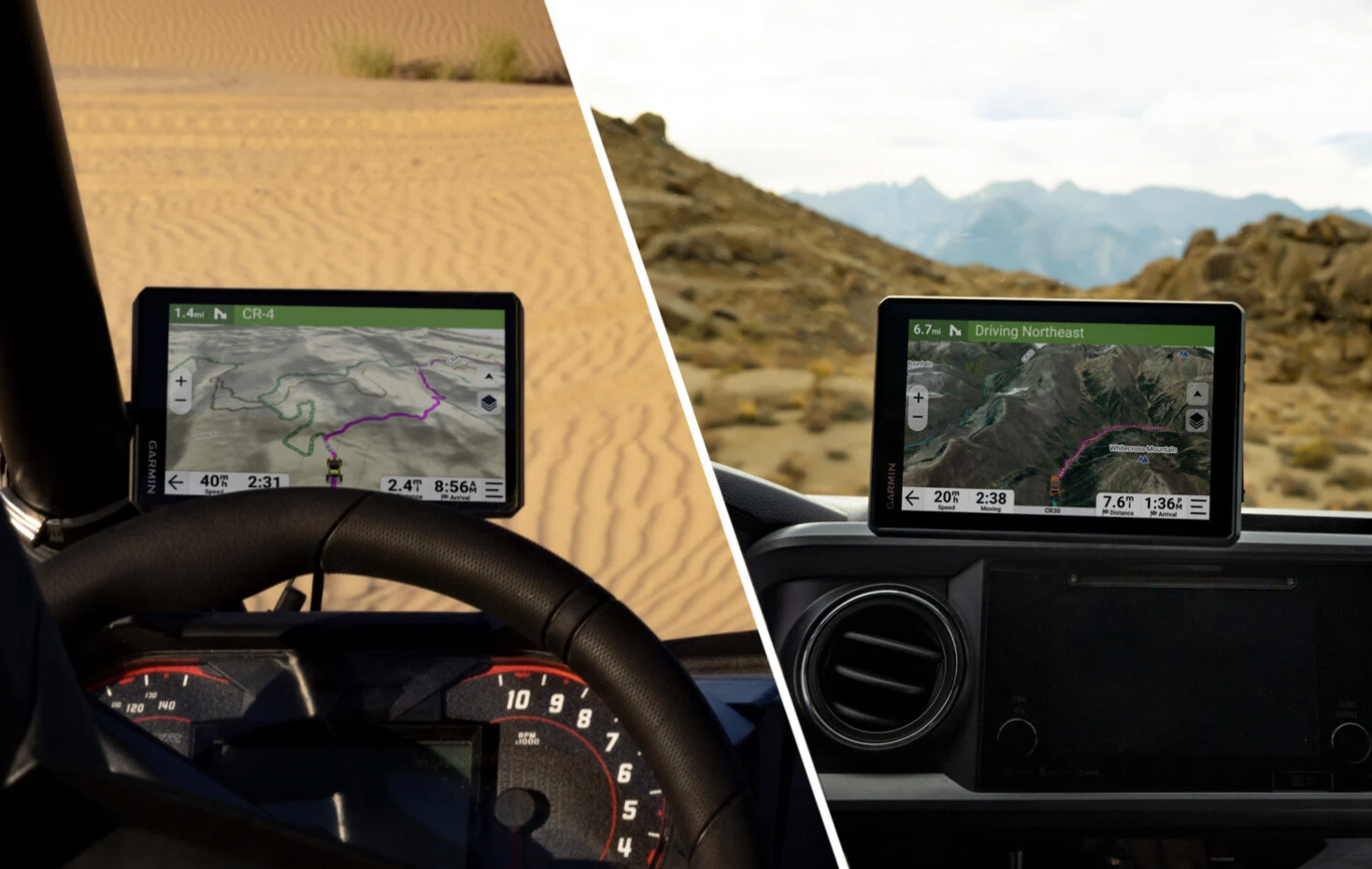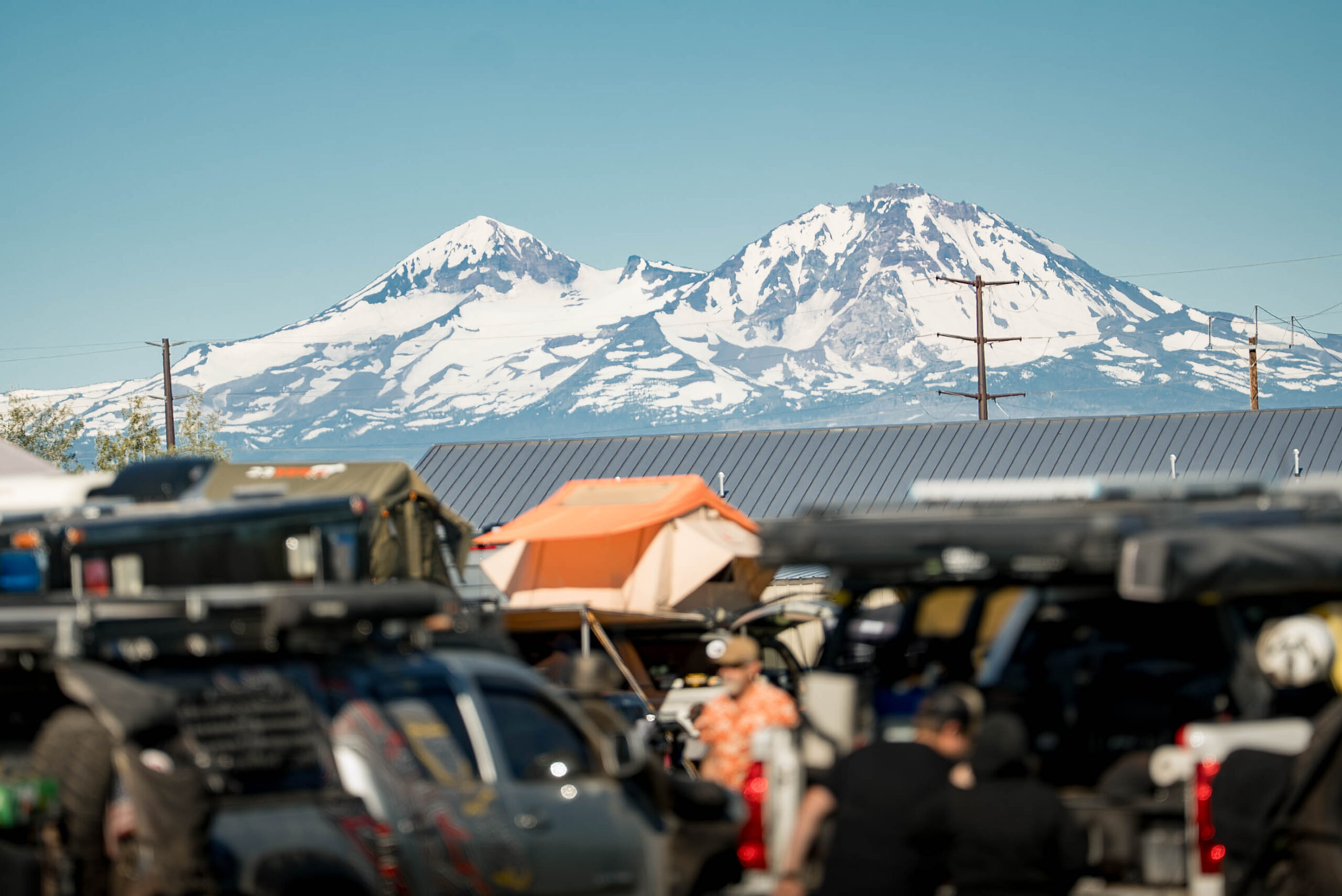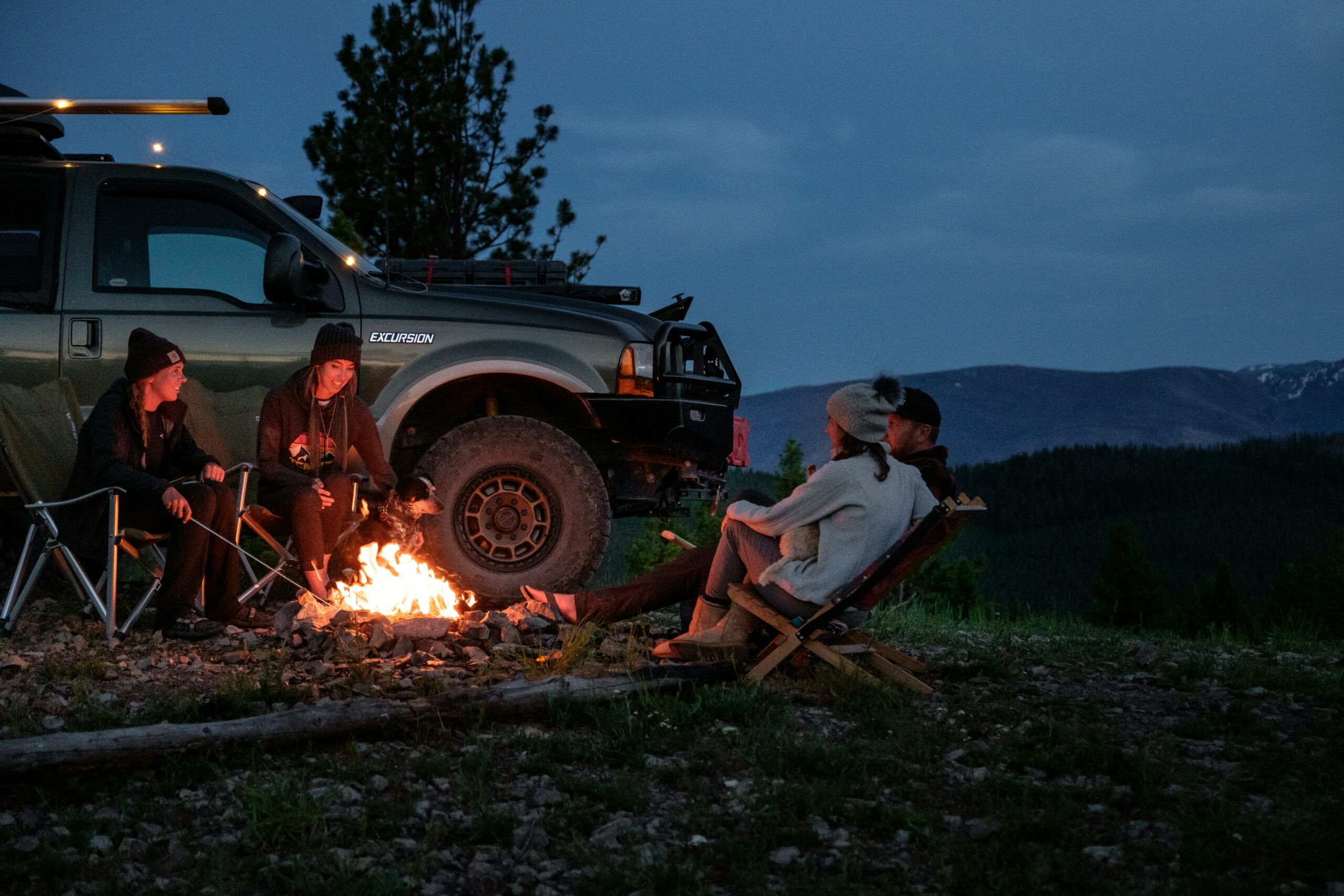Guest blog — by Linda Tyler
Linda Tyler is The Nourishing Nomad — functional nutritionist, digestive wellness guru, and full-time overlander. When she’s not serving the adventure travel community from her “home office” (a 4×4 Sprinter with on-board KLX commuter), she can be found rock climbing, adventure running, cooking up nutrient-dense meals, or visiting farms and food artisans to share with climbers through her nonprofit, Farm To Crag. Follow Linda @thenourishingnomad.nutrition
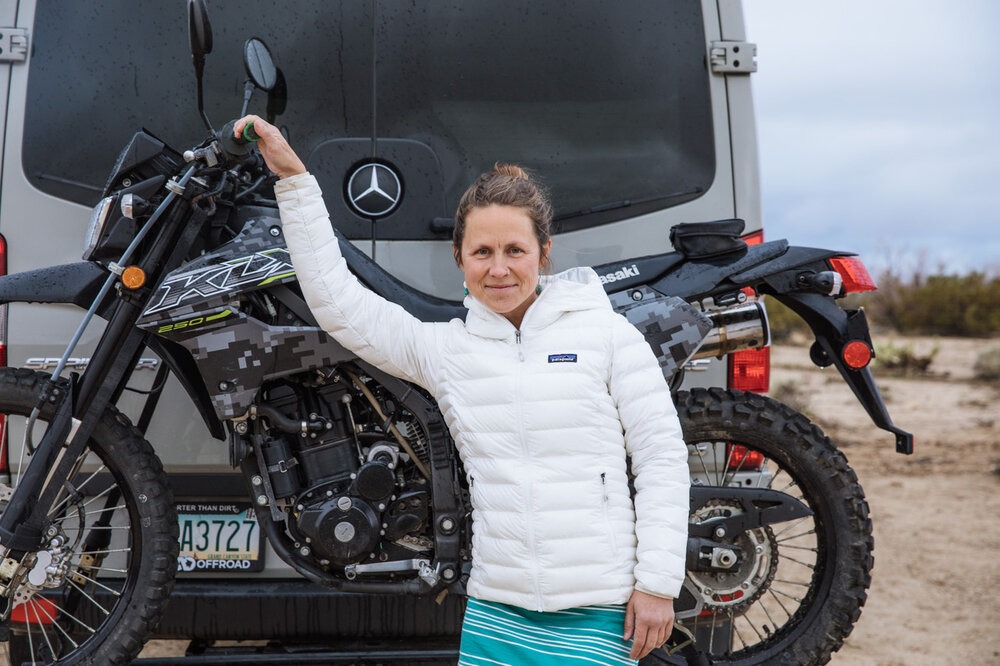
Photo credit: Sofi Aldinio @sofialdinio
For most of us, overlanding is as much about gathering with friends at the end of the day for a great meal and a quaffable bourbon as it is about reaching any particular destination or accomplishing your latest, loftiest physical feat. As in most things in life, it’s all about the food.
Why not use your newfound downtime to master the art of being an overland ‘nutrivore?’ In other words, getting skillful about packing as much nutrition as you can into each and every bite — regardless of your dietary preferences, your personal food philosophy, your overland vehicle of choice, or your favored pursuit at the end of the road.
This is the essence of “nutrient density.”
We overlanders talk a lot about how to pack as much stuff into the smallest possible space, all while minimizing weight. Well, nutrition on the road is no different. Except that — instead of gear, tools, parts, and recovery equipment — we’re talking about minerals, vitamins, microbiome-nourishing fibers, brain-boosting fatty acids, immune-supportive antioxidants, muscle-building proteins, and energy-enhancing carbohydrates. The collective benefit to our bodies is the same as it is for our vehicles — being well fueled, running smoothly, and staying resilient to damage. Learning to be an overland ‘nutrivore’ might just be the most important thing we do right now. A quick scroll through your Instagram feed will reveal that we’re already spending much of our downtime cooking.
To help you use your ‘quaran-time’ most efficiently, I’ve pulled together some of my favorite tips, techniques, and recipes to maximize nutrient density on the road so you can have meals and strategies at the ready — whenever travel welcomes you back. I do hope it’s soon.
Dry-storage staples
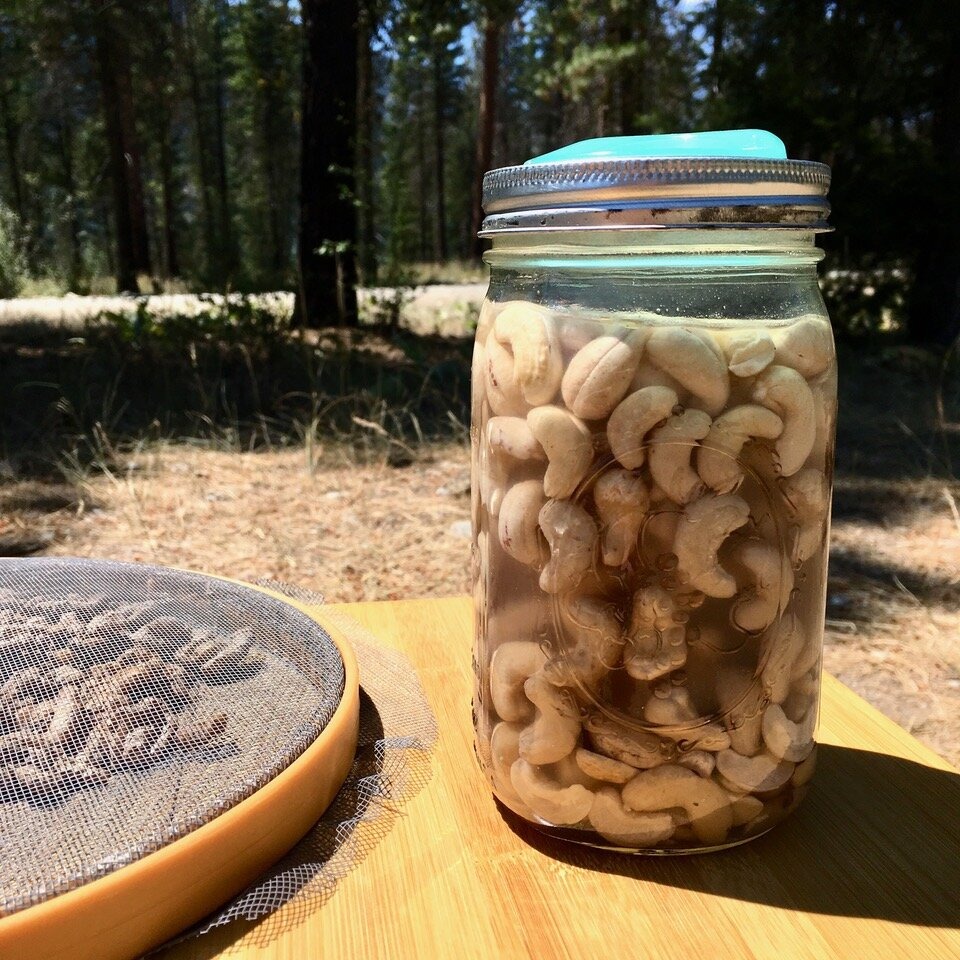
Photo credit: Linda Tyler
Nuts and seeds are a traveler’s best friend: portable, stable, satiating, and rich in healthful fats. I mean, who doesn’t have their favorite version of trail mix? Mine includes dried pineapple, coconut, banana, and dates tossed with macadamia nuts, pumpkin seeds, sunflower seeds, plantain chips, cacao nibs, 90% (or more) dark chocolate, and three solid pinches of sea salt.
Yet for many of us, nuts and seeds can be difficult to digest — especially when we toss them back by the handful. This is because seeds (i.e., nuts, seeds, grains, and legumes) are the future offspring of plants. Their singular purpose in life is to make it to optimal germination conditions and sprout into a new plant, one day spreading their own seeds to future generations. The problem for us is that until those germination conditions are met, chemicals within the seed serves to bind critical nutrients and prohibit enzymes from being activated — namely phytates, lectins, and digestive enzyme inhibitors — rendering much of the nutrient content unavailable. Zinc, magnesium, and phosphorus are particularly affected by these “anti-nutrients.”
How do we mimic germination conditions and liberate the nutrients? Enter soaking, sprouting, and — my personal favorite — fermentation. Each of these traditional practices was used by our ancestors to maximize the nutrient density of seeds, increase their storability, and make them easier to digest. They vary in their effectiveness, ease, water- and time-requirement, but all are sufficient to at least limit the effect of anti-nutrients in plant seeds. This can be especially important if you follow a vegetarian or vegan diet and consume a large proportion of these foods regularly.
But what about on the road? My van has a “fermentation station” where I soak and sour all of my seeds. Nothing fancy needed: just a jar or pot, water, and something to strain the seeds with. I go the extra step of drying my snack seeds in a homemade sun dehydrator or sometimes blend them into butters or spreads. Not only are they more nourishing, the fermentation process also gives them a pleasant, earthy, slightly sour flavor that I just can’t get enough of.
Learn how to prepare your nuts and seeds or grains and legumes. And, if you’re really inspired, geek out on nuts here or phytates and ideal preparation practices here.
Don’t fear fat
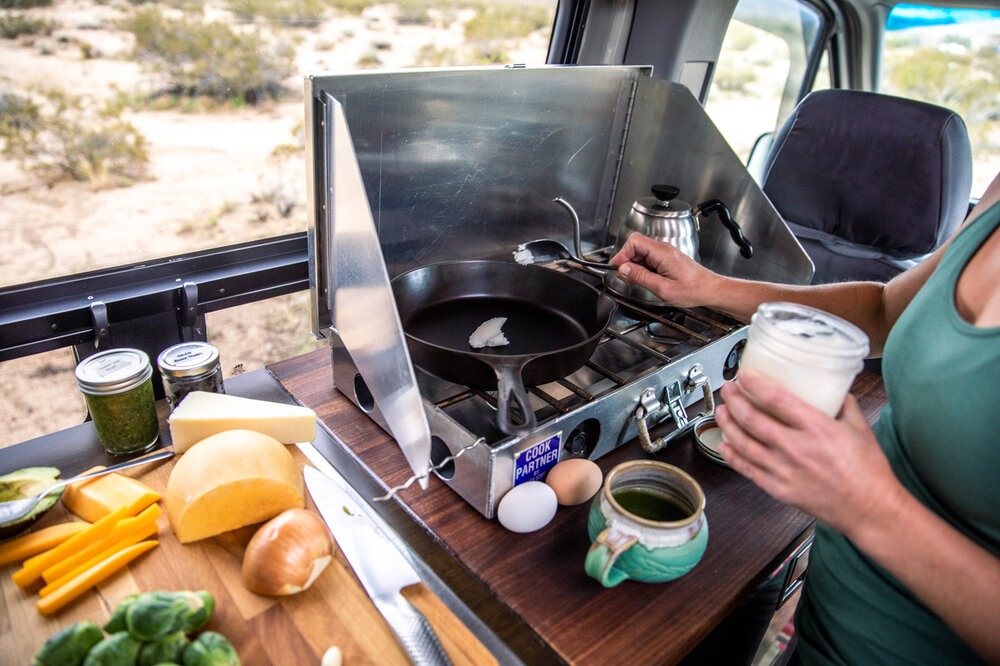
Photo credit: Sofi Aldinio @sofialdinio
Fats are arguably the most satisfying macronutrient out there. Think about it. Is your broccoli as yummy without that pad of pastured butter melting over the florets? Does the bitterness of your asparagus resonate without the creamy, vegetal bite of a quality olive oil drizzled on top? And what about your hamburger? Can you even buy 0% fat ground beef? Of course not.
There’s a reason for this. Ingested fat actually causes the release of a hormone called cholecystokinin which literally contributes to physiological satiation in the body. That’s because the body knows that fats are energy powerhouses — providing slow-burning logs of enduring energy to be used over time. They are essential for absorbing and utilizing fat-soluble vitamins (A, D, E, and K) and they provide the building blocks for literally every cell in the body, as well as our brains and many hormones. Fats are satiating, energizing, and they taste really good too.
Which are the healthiest fats for travel? When it comes to varied temperature and light conditions (like when you’re overlanding or backpacking) the best fats are higher in saturated fat content: coconut oil, ghee (clarified butter), tallow, or other animal fats. These are also the best for high-heat cooking. If you have refrigeration or even modestly cool and dark storage areas, use monounsaturated-dominant oils like avocado, almond, seed and olive oils for light cooking and eating raw. Oils high in polyunsaturated fats — like walnut, flax, and fish — should always be eaten raw and sheltered from light and heat.
For backpacking and overland travel, ghee and olive oil tend to dominate my meals for cooking and raw use, respectively. However, I also include plenty of whole food, unrefined fats like avocados, walnuts, nut butters, wild salmon, mackerel, and olives. Vary the fats you use depending on conditions and desired use. And always include plenty of those anti-inflammatory polyunsaturates.
Vegetables: the ultimate superfoods
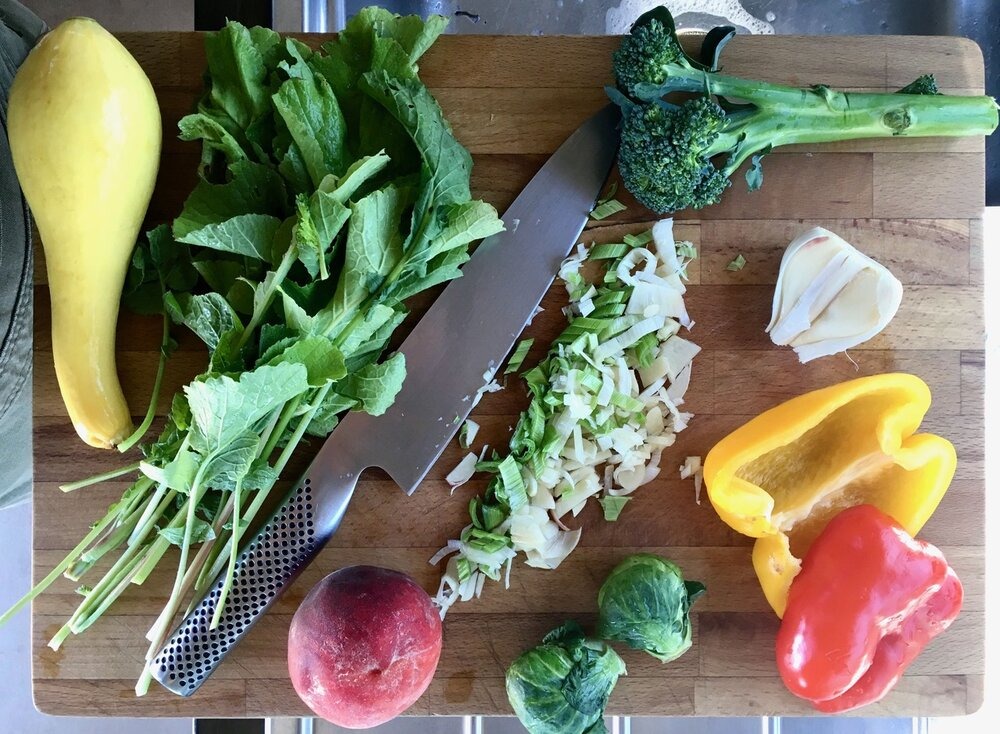
Photo credit: Linda Tyler
Perhaps the most neglected food group while overlanding are the vegetables. Let’s face it, they’re challenging travel companions. Vegetables consume a lot of space, many require refrigeration, and they don’t last terribly long in their raw form.
Yet vegetables are also fundamental to our health.
Vegetables top the charts when it comes to almost every nutrient I mentioned before — vitamins, minerals, fibers, antioxidants, even amino acids and fatty acids. They are indisputably the most important category of food to prioritize when it comes to meal planning and advance preparation for your overland nutrivore adventure (and pretty much every other day).
My favorite portable vegetables are alliums (onions, garlic, leeks, etc.); winter squashes (delicata, acorn, kabocha, butternut, and spaghetti squash); and roots and tubers (turnips, rutabaga, celeriac, parsnips, radishes, carrots, beets, sweet potato, and potatoes). These all store well without refrigeration (though they do appreciate cooler temperatures), are versatile when combined with your favorite protein and greens, and contribute far more fiber and phytonutrients to your diet than any packaged starch could. Steam, pan fry, boil, or roast in the fire and then top with miso, butter, pesto, fried eggs, sauerkraut and/or a handful of seeds (fermented, of course) and you’ve got yourself a shelf-stable, nutrient-dense meal.
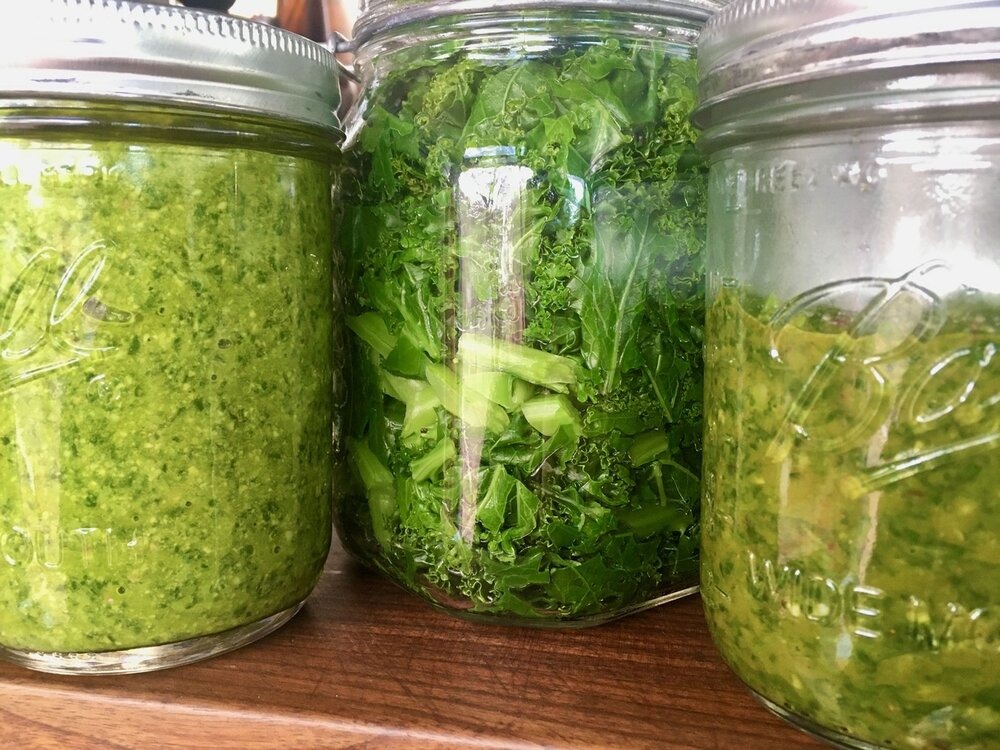
Photo credit: Linda Tyler
Leafy green vegetables require another strategy. Since they lose their nutritional value as they wilt or turn yellow, it’s best to eat leafy greens quickly, store temporarily in green soups and purees, or make pestos and sauces preserved by an oil and an acid. I prefer the latter strategy for fresh herbs — like this traditional recipe for chimichurri or this classic take on basil pesto with a walnut twist. If you think about it, you can really turn any tender green in pesto.
For instance, this dandelion pesto is fantastic over winter squash soup. Bitter greens boost liver function. Toss in some warming and soothing acorn or butternut squash just bursting with beta carotene for extra benefit. Hardier greens like kale, collards, beet tops, and chard can be pre-steamed and packed into containers 1/8th the size of the original bunch. However, they’ll last a couple of days in moderately cool storage like a moistened cotton sack. There are tons of options with green vegetables, and it pays dividends in your long-term wellness to think outside the box when it comes to bringing them on the road with you.
Bone broth: the original traveler’s soup
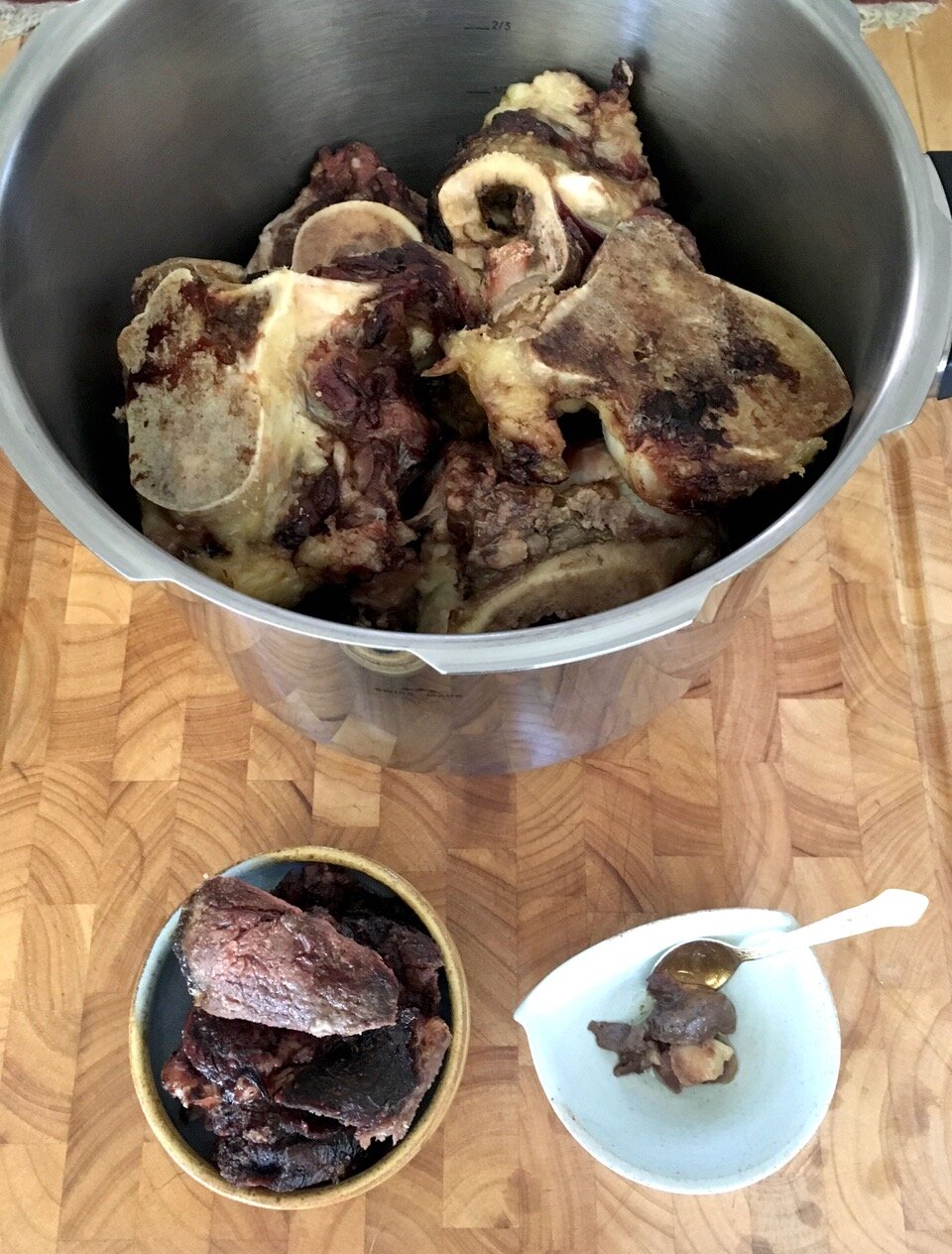
Photo credit: Linda Tyler
Sure, bone broth is all the rage these days, but with good reason: it’s rich in gelatin, amino acids, and minerals that are easily absorbed and nourishing to the gut lining. The trick to taking it on the road with you is in reducing it into a much more stable, less space-consuming consistency. In fact, bone broth was the original traveler’s soup — condensed into a portable cube that we now know as bouillon.
Condensing bone broth isn’t hard. Just take your prepared bone broth and boil it down to about 1/10th the original volume — until the consistency is sticky and stringy. It’ll be difficult to transfer to a small container, but what results is an incredibly concentrated, umami-rich powerhouse of flavorful and gut-healing nutrients you can add to soups, stews, cooked veggies, grains or legumes. Plus it’s perfect for sipping on its own. You’ll only need a spoonful at a time and it lasts for months in cold storage or several days at room temperature. Alternately, condense it further to make your own bullion cubes.
This stuff is my secret weapon. In the backcountry, on a cold-winter morning, or shared with friends in a hearty stew. It transforms good into amazing.
Soups
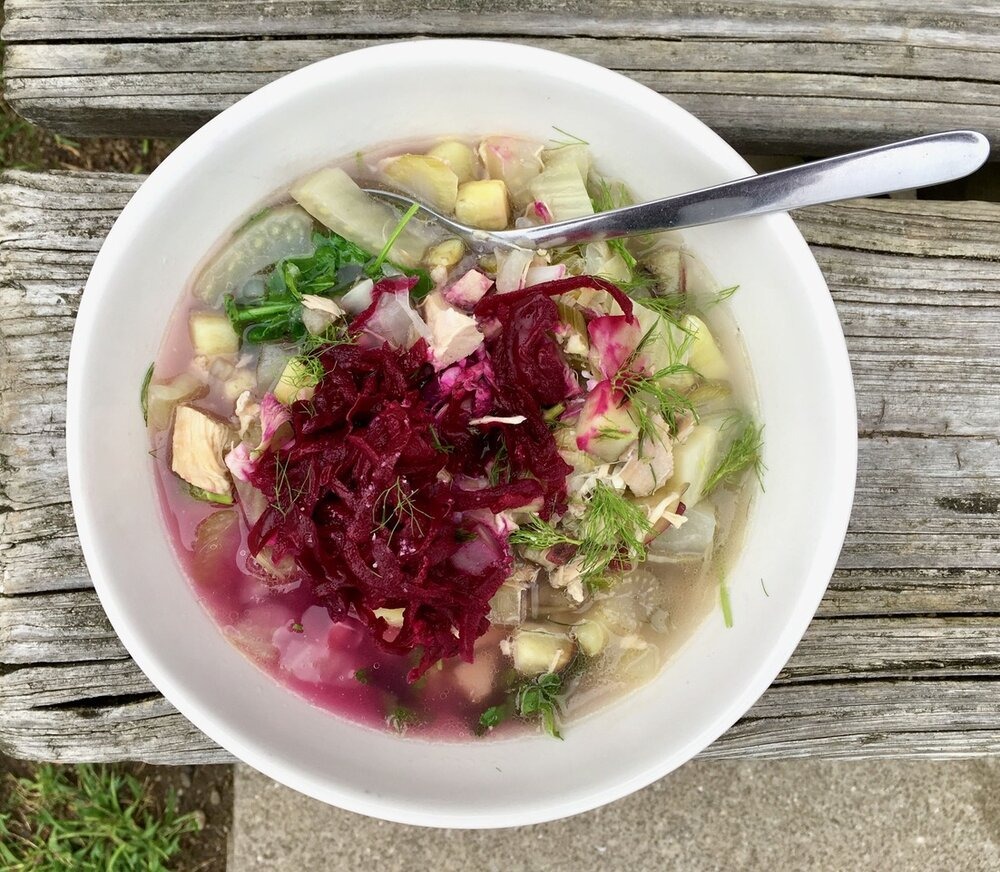
Photo credit: Linda Tyler
Finally, soups and stews are my favorite strategy for combining each of the above nutrient-dense foods with pastured or wild meats to create a satisfying, hydrating and nourishing meal that will leave plenty of time for sharing stories and companionship around the fire.
My go-to stew for both backcountry and front-country preparation is infinitely adaptable to whatever the conditions provide: use fresh venison or beef jerky, dehydrated sweet potatoes of fresh butternut squash, dried mushrooms or foraged, seasonal pears or dried apple rings, ginger root or powder. However you make it, be sure to share.
You can prepare soups in advance and freeze them in pre-portioned bags to act as “ice” in your cooler, or whip them up on the fly from accidental roadkill. I’ve actually done this with a hit-and-run deer, but only after calling state game officials to verify that it’s safe and legal. Then toss in your prepared leafy greens, concentrated bone broth, and whatever storage vegetables you have on hand. Top your soup with fermented seeds and a spoonful of sauerkraut and you’ve mastered being an overland nutrivore. Tastes pretty good, doesn’t it?
Lead photo credit: Sofi Aldinio @sofialdinio
